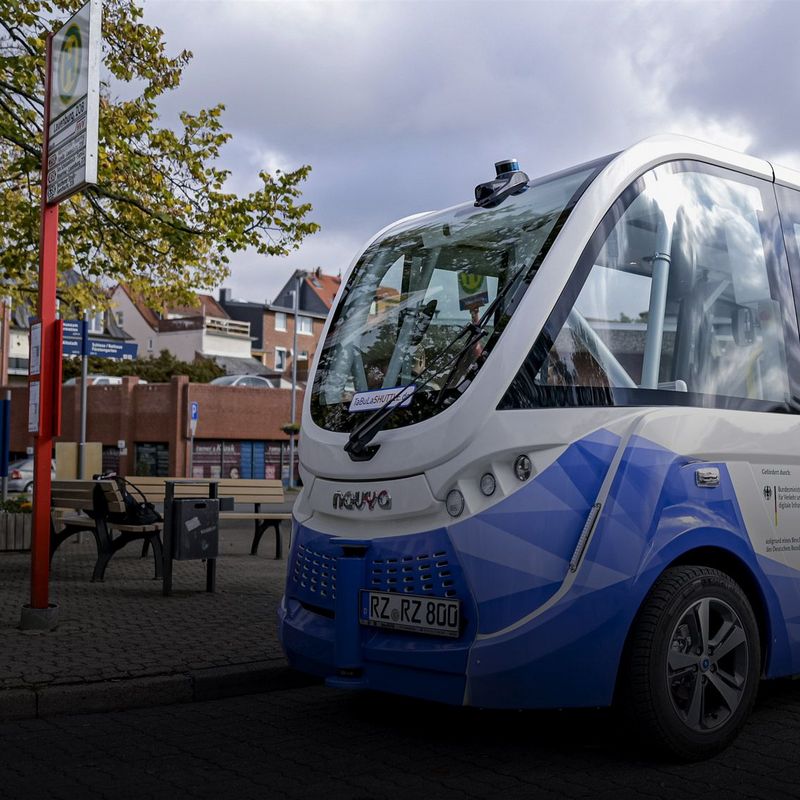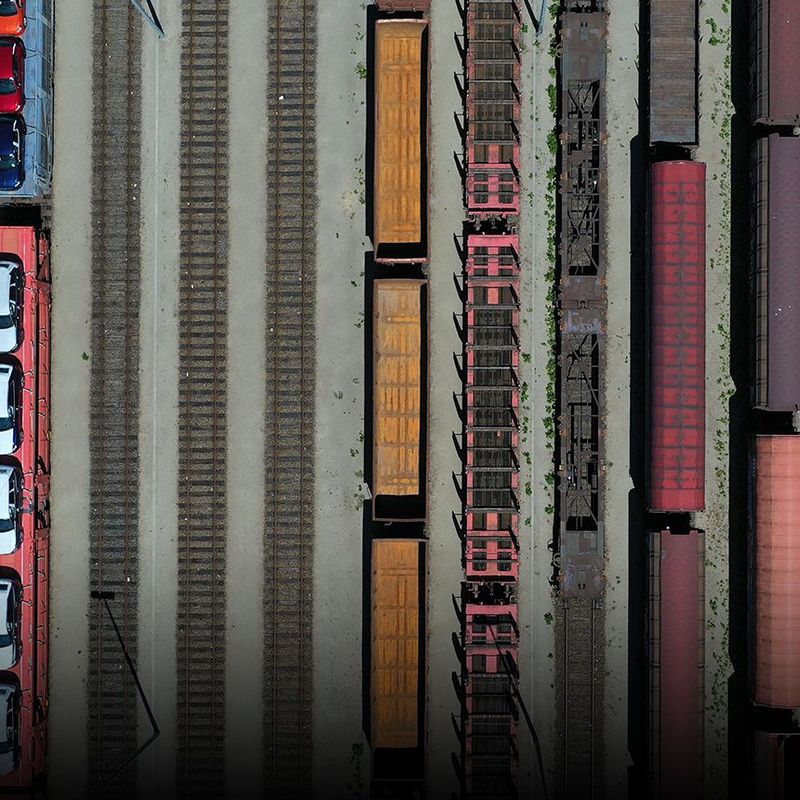03. June 2021
The Transrapid seemed to have been consigned to the dustbin of history about ten years ago. But not everyone has written off magnetic levitation technology. The Max Bögl construction group has been working for several years on its own magnetic levitation train, the Transport System Bögl (TSB). Back in the day, the company was involved with the Transrapid test track in Emsland (Germany). Now, TÜV NORD experts have tested the operational control technology of the TSB and found it to be safe. Railway expert Hans Vallée from TÜV NORD explains what makes testing a magnetic levitation train such a particular task and how to go about doing it.
#explore: How does the Transport System Bögl (TSB) differ from the Transrapid?
Hans Vallée: The Transrapid is a high-speed maglev train. The TSB, on the other hand, is designed for urban public transport and has a maximum operating speed of 150 kilometres per hour. The key technical difference is this: with the Transrapid, the track acts also as the drive system – the engine is rolled out as a copper cable over the entire route. With the TSB, on the other hand, the drive is in the vehicle itself. As a result, the costs are significantly lower. Another special feature is the TSB’s operational control technology. Unlike a classic interlocking system, it’s fully automated and completely integrated into the vehicles and the stretch of track. This means that the trains sort out among themselves which is allowed to run when and where. Based on the timetable, they know where they want to go and tell the points whether they want to go right or left.
„My test is primarily based on documents in which the manufacturer sets out the specifications – i.e. the requirements – for this overall system and on the test reports that prove they’ve been met.“
How did you verify that this fully automatic train service would also work safely and reliably?
Bögl has been testing its maglev train for several years on a test track in Sengenthal, Bavaria. However, the vehicle is confined to a simple single-track line, on which all the basic elements for its actual use in real life are being put into practice. So, my test is primarily based on documents in which the manufacturer sets out the specifications – i.e. the requirements – for this overall system and on the test reports that prove they’ve been met. In the process, I develop my own risk analyses and fault scenarios to check whether the overall package of requirements provides for measures that will prevent an accident in any given scenario. Then I check whether the corresponding specifications are plausible and complete, i.e. there are no gaps or contradictions, in relation to both the overall system and to the subsystems such as drive, brakes and communication.
What would be a specific fault scenario, and how would the TSB handle it?
One fault scenario would be, for example, an interruption to the energy supply. In the case of the TSB, this would result in the vehicle dropping down onto the track and slowing down due to friction. Now I'm looking at what this fault scenario would mean for the vehicles following on behind: will they drive right up to the broken down train, or will they stop far enough away to be safe? Will they find out that the vehicle in front has broken down? And there’s a particular complication in this scenario: What happens if the comms systems are also affected and the vehicle can no longer communicate? If this happens, it will to all intents and purposes cease to exist for the other vehicles. So, I check if there’s a requirement for a train only to run if it knows that the route really is clear and reserved exclusively for it to pass through. As soon as a stationary vehicle stops reporting its position, a moving train travelling in the same direction on the same route must keep it in view as a danger point and come to a stop safely before the last reported location of the stationary train. After all, unlike a self-driving car, an automated system on rails can only drive forwards or backwards: it can’t just swerve to avoid an impact. So, in the event of faults in the system, it must always activate the automatic emergency brake in case of doubt.
What special challenges for evacuation after a fire or accident arise from the elevated design of the maglev train?
There are rules for fire protection that prescribe how many people must be evacuated within which time. For an evacuation to work at all, however, aspects of functional safety must also be considered, and this is what I’m attending to in my tests. First of all, the question arises as to how a track needs to be constructed to allow people to evacuate. With the Transrapid, for example, the train’s chassis wraps around the track like a clamp. With the TSB it’s the other way around, but here, too, the track interlocks with the vehicle. In other words, if you step out of the door outside a train station, it’s a long way down! Bögl has for this reason installed an emergency exit door at each end of the vehicle. Since the TSB is automated, it doesn’t have a driver’s cab through which the passengers would have to go. The emergency exit is therefore a simple solution, but one which places further demands on the overall system. On the one hand, you need ways down at regular intervals to allow the passengers to climb down from the track. And when people are moving along the track, it’s essential to ensure that these sections are not live. So, I have to do the corresponding checks to find out whether the power supply will automatically be interrupted as soon as someone opens the emergency exit. Not only that, but a safe solution is also needed for wheelchair users. Since the emergency exit is connected to the track by stairs, they can’t get out this way. After all, you can't expect other passengers to carry them out.
© Bögl FirmengruppeAmong other things, the high-stand design is being tested for how to evacuate people in case of an emergency.
How did the manufacturer solve this problem?
Bögl had to create a way for wheelchair users to stay safely in part of the train until the emergency services arrive. This means that the train must have at least two carriages which can be sealed off from each other by fireproof bulkheads Moreover, it’s critical to stop the fire from spreading from the affected part of the vehicle in such a way that wheelchair users in the other part of the train are at risk. My colleagues from TÜV NORD have tested this in the fire laboratory. You also have to be able to switch the ventilation off to prevent the ingress of combustion gases from the burning part of the train. These mutually dependent requirements were also examined.
What's next for the TSB?
In the future, the TSB won’t just transport passengers, but also goods. At this year's World Congress on Intelligent Transport Systems in Hamburg, Bögl intends to set up a demonstration track for container transport. In October, a transport system with a loading unit will be presented there which features further safety-relevant elements. We’re preparing to carry out the appropriate checks on the safety of the system.
When might the maglev train see regular use?
In Chengdu, China, Bögl has teamed up with local company Xinzhu to build a 3.5-kilometre demonstration track and has already put it into operation. The vehicles and the track were manufactured by Bögl in Bavaria, and the supports for the track were produced on site by Xinzhu. One of the purposes of the track is to get the system registered for use in China on the basis of the proof previously obtained in Germany. On the other hand, however, the cooperation partners want to demonstrate the technology there especially to potential Chinese customers. As part of its current five-year plan, the government in Beijing is planning public transport projects with a total length of 3,000 kilometres. Bögl and Xinzhu hope that the magnetic levitation train will also play an important role in this plan.
These might interest you too:
About Hans Vallée
© TÜV NORD
Hans Vallée is an expert in and appraiser of functional safety at TÜV NORD with a focus on railways.




